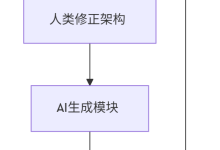FastText工具与迁移学习基础详解
一、知识框架总览
- FastText工具核心功能与应用场景
- FastText模型架构与工作原理
- 层次Softmax加速机制
- 哈夫曼树概念与构建方法
二、FastText工具核心解析
2.1 功能定位
- 双重核心功能
- 文本分类:可直接用于文本分类任务,快速生成模型结果
- 词向量训练:第二章文本预处理中已使用其进行word2vec词向量训练
- 基线模型价值
- 定义:作为基准模型(baseline),为后续模型选型提供参考标准
- 应用场景:当面临模型选型困境(如RNN、LSTM、SOM、Bert等选择)时,可先通过FastText快速获得基准准确率(如80%),后续模型性能不得低于此标准
2.2 技术优势
| 高速训练与预测 | 内部网络结构简单,减少计算复杂度 |
| 高精度保持 | 1. 训练词向量时采用层次Softmax结构2. 引入ngram特征弥补模型缺陷 |
| 易用性强 | 已完成安装,且在前期学习中已实践应用 |
三、FastText模型架构
3.1 整体结构
- 与word2vec的CBOW模型类似,区别在于:
- FastText:预测文本标签
- CBOW模型:预测中间词
- 三层架构:输入层 → 隐藏层 → 输出层
3.2 各层工作流程
#mermaid-svg-FAlyuCl79ZiaI8GZ {font-family:\”trebuchet ms\”,verdana,arial,sans-serif;font-size:16px;fill:#333;}#mermaid-svg-FAlyuCl79ZiaI8GZ .error-icon{fill:#552222;}#mermaid-svg-FAlyuCl79ZiaI8GZ .error-text{fill:#552222;stroke:#552222;}#mermaid-svg-FAlyuCl79ZiaI8GZ .edge-thickness-normal{stroke-width:2px;}#mermaid-svg-FAlyuCl79ZiaI8GZ .edge-thickness-thick{stroke-width:3.5px;}#mermaid-svg-FAlyuCl79ZiaI8GZ .edge-pattern-solid{stroke-dasharray:0;}#mermaid-svg-FAlyuCl79ZiaI8GZ .edge-pattern-dashed{stroke-dasharray:3;}#mermaid-svg-FAlyuCl79ZiaI8GZ .edge-pattern-dotted{stroke-dasharray:2;}#mermaid-svg-FAlyuCl79ZiaI8GZ .marker{fill:#333333;stroke:#333333;}#mermaid-svg-FAlyuCl79ZiaI8GZ .marker.cross{stroke:#333333;}#mermaid-svg-FAlyuCl79ZiaI8GZ svg{font-family:\”trebuchet ms\”,verdana,arial,sans-serif;font-size:16px;}#mermaid-svg-FAlyuCl79ZiaI8GZ .label{font-family:\”trebuchet ms\”,verdana,arial,sans-serif;color:#333;}#mermaid-svg-FAlyuCl79ZiaI8GZ .cluster-label text{fill:#333;}#mermaid-svg-FAlyuCl79ZiaI8GZ .cluster-label span{color:#333;}#mermaid-svg-FAlyuCl79ZiaI8GZ .label text,#mermaid-svg-FAlyuCl79ZiaI8GZ span{fill:#333;color:#333;}#mermaid-svg-FAlyuCl79ZiaI8GZ .node rect,#mermaid-svg-FAlyuCl79ZiaI8GZ .node circle,#mermaid-svg-FAlyuCl79ZiaI8GZ .node ellipse,#mermaid-svg-FAlyuCl79ZiaI8GZ .node polygon,#mermaid-svg-FAlyuCl79ZiaI8GZ .node path{fill:#ECECFF;stroke:#9370DB;stroke-width:1px;}#mermaid-svg-FAlyuCl79ZiaI8GZ .node .label{text-align:center;}#mermaid-svg-FAlyuCl79ZiaI8GZ .node.clickable{cursor:pointer;}#mermaid-svg-FAlyuCl79ZiaI8GZ .arrowheadPath{fill:#333333;}#mermaid-svg-FAlyuCl79ZiaI8GZ .edgePath .path{stroke:#333333;stroke-width:2.0px;}#mermaid-svg-FAlyuCl79ZiaI8GZ .flowchart-link{stroke:#333333;fill:none;}#mermaid-svg-FAlyuCl79ZiaI8GZ .edgeLabel{background-color:#e8e8e8;text-align:center;}#mermaid-svg-FAlyuCl79ZiaI8GZ .edgeLabel rect{opacity:0.5;background-color:#e8e8e8;fill:#e8e8e8;}#mermaid-svg-FAlyuCl79ZiaI8GZ .cluster rect{fill:#ffffde;stroke:#aaaa33;stroke-width:1px;}#mermaid-svg-FAlyuCl79ZiaI8GZ .cluster text{fill:#333;}#mermaid-svg-FAlyuCl79ZiaI8GZ .cluster span{color:#333;}#mermaid-svg-FAlyuCl79ZiaI8GZ div.mermaidTooltip{position:absolute;text-align:center;max-width:200px;padding:2px;font-family:\”trebuchet ms\”,verdana,arial,sans-serif;font-size:12px;background:hsl(80, 100%, 96.2745098039%);border:1px solid #aaaa33;border-radius:2px;pointer-events:none;z-index:100;}#mermaid-svg-FAlyuCl79ZiaI8GZ :root{–mermaid-font-family:\”trebuchet ms\”,verdana,arial,sans-serif;}word embedding+ngram特征向量求和平均全连接层输入层隐藏层样本语义向量输出层分类结果
- 输入层:对词汇进行word embedding处理,若有额外特征则一并融入
- 隐藏层:# 伪代码:计算样本平均向量
def get_sample_vector(word_vectors):
# word_vectors为[单词数, 向量维度]的矩阵
sum_vector = np.sum(word_vectors, axis=0) # 按列求和
avg_vector = sum_vector / len(word_vectors) # 求平均
return avg_vector # 得到[1, 向量维度]的样本向量 - 输出层:将平均向量通过全连接层映射到类别空间,选取最大概率类别作为预测结果
四、层次Softmax加速机制
4.1 解决的核心问题
- 传统Softmax在多类别场景(如4万词汇分类)中存在计算瓶颈:
- 需计算所有类别的概率值
- 参数量与计算量随类别数呈线性增长
4.2 实现原理
- 采用二叉树结构将多分类转化为一系列二分类
- 每个类别对应树的一个叶子节点
- 通过路径上的一系列二分类决策计算最终概率
五、哈夫曼树基础
5.1 核心定义
- 最优二叉树:使所有叶子节点的带权路径长度之和(WPL)最小的二叉树
- 带权路径长度(WPL)计算公式:WPL = Σ(叶子节点权值 × 根节点到该节点的路径长度)
5.2 关键概念
| 二叉树 | 每个节点最多有两个子树(左子树、右子树)的有序树 |
| 叶子节点 | 没有子节点的节点 |
| 节点权值 | 赋予节点的有实际意义的数值 |
| 路径长度 | 从根节点到目标节点经过的分支数 |
5.3 构建步骤
# 伪代码:哈夫曼树构建(简化版)
def build_huffman_tree(weights):
while len(weights) > 1:
# 排序获取最小的两个权值
weights.sort()
w1 = weights.pop(0)
w2 = weights.pop(0)
# 合并为新树
new_weight = w1 + w2
weights.append(new_weight)
return weights[0] # 返回根节点权值
 网硕互联帮助中心
网硕互联帮助中心






评论前必须登录!
注册